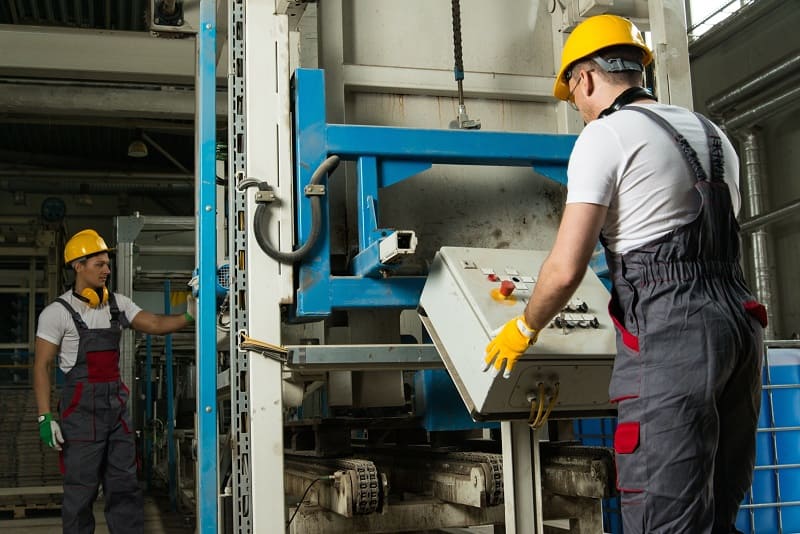The abrupt silence of stopped machinery is a sound that’s deeply familiar to plant managers. There’s never any quiet after that; there are radio calls, alarms, and technicians rushing to identify the problem as production numbers remain frozen. Equipment downtime directly drains profit margins, throws schedules into chaos, and shakes customer confidence.
Preventive maintenance is a strategy to reduce equipment downtime, not just for keeping equipment running. It protects an organization’s assets, refines labor use, and stretches the lifespan of infrastructure that your operation depends on every single day.
The Cost Of Idle Equipment And Why Prevention Matters
When a pump stalls, a conveyor halts, or a heat exchanger becomes fouled, production often comes to a halt.
Siemens’ True Cost of Downtime analysis estimates global manufacturers lose around 11% of annual revenue to unplanned outages, with the largest firms losing over $1 trillion annually. In industries where an hour of downtime can cost millions of dollars, preventing downtime directly contributes to competitive advantage.
In the past, traditional maintenance involved responding to issues as they arose or waiting for them to manifest before taking action. However, that strategy frequently had a price. A minor flaw could develop into a major one, increasing the harm with each delay.
Equipment components aged more quickly than they should have, safety hazards increased, and emergency repairs took up budgets.
Preventive Maintenance And How It Works
Preventive maintenance, or PM, is a disciplined, forward-looking method of keeping equipment in peak condition before breakdowns ever happen. It combines scheduled inspections, thorough cleaning, precise lubrication, timely part replacements, and performance testing—each guided by set intervals or real-time condition data.
The objective is simple but essential. Identify the earliest hints of wear, inefficiency, or imbalance and correct them before they ripple into costly system-wide failures.
Effective PM programs rely on accurate data and repeatable schedules, with metrics such as Mean Time Between Failures (MTBF) and Mean Time to Repair (MTTR) being used to help track performance trends.
When these metrics improve, overall availability—calculated as MTBF divided by the sum of MTBF and MTTR—rises as well. In other words, a well-run PM program prevents shutdowns and shortens recovery time when they do happen.
Cleaning And Waste Management As Maintenance Tools
Much of the downtime that cripples industrial operations can be traced back to environmental conditions, which are issues that are entirely preventable with disciplined cleaning and waste-handling practices. Wastewater and treatment systems, in particular, are vulnerable to gradual buildup that chokes pumps, fouls filters, and undermines process stability.
The Environmental Protection Agency and the Water Environment Federation both point to an essential truth: screening and grit removal form the first line of defense in treatment operations. Screens catch what doesn’t belong, such as rags, plastics, debris, while grit systems capture the heavier intruders that grind away at pumps and valves.
With it, downstream equipment breathes easier, energy efficiency holds steady, and the wear on high-value assets slows to a crawl. In practice, that means fewer shutdowns, smoother operation, and a longer, steadier rhythm of reliability across the facility.
Similarly, neglecting sumps, trenches, and pits can lead to solids accumulation that damages seals, bearings, and impellers. Over time, the resulting stress increases vibration and power draw, both early warning signs of mechanical failure. Regular removal of sediment and debris maintains hydraulic efficiency while preventing cavitation and overheating.
Heat-exchanger fouling presents another major cause of downtime. Layers of scale or biological growth insulate metal surfaces, forcing systems to run hotter and consume more energy.
Data, Technology, And Condition-Based Insights

More and more, modern facilities are moving away from maintenance based on time and toward predictive models that use sensors and analytics to help reduce equipment downtime.
These systems keep track of changes in vibration, temperature, or pressure and let you know when parts are starting to move out of their ideal ranges. McKinsey’s research shows that predictive maintenance can cut machine downtime by as much as 50% and make equipment last up to 40% longer.
For instance, keeping an eye on the amperage of a pump motor can show when friction inside the motor increases because of dirt or misalignment. Similar condition-based indicators can trigger maintenance work orders at the exact point where intervention prevents failure without performing unnecessary service.
Even so, predictive maintenance requires clean, well-maintained equipment to function accurately. Sensors fouled with grime or residue will misread data, leading to false alarms or overlooked issues. A consistent preventive cleaning schedule safeguards the reliability of these monitoring tools as much as it protects the machines themselves.
Safety and Compliance As Downtime Reduction Strategies
Every maintenance professional knows how fast an unsafe shortcut can turn into a shutdown. OSHA’s Lockout/Tagout standard, designed to control hazardous energy during maintenance, prevents about 120 deaths and 50,000 injuries annually. Each avoided incident prevents an average of 24 lost workdays.
Confined-space standards likewise protect workers who clean tanks, pits, and vessels. When these tasks are completed under proper permits and supervision, facilities maintain both safety and operational continuity. The reliability gains that stem from safe work practices reinforce the larger preventive maintenance framework.
Asset Management and Standardized Maintenance Frameworks
Global standards like ISO 55000 and NFPA 70B act as both compass and framework, guiding organizations to fuse maintenance discipline with overarching business intent.
ISO 55000 speaks in the language of asset value—how every repair, replacement, and inspection ties into the larger picture of lifecycle optimization. NFPA 70B, by contrast, gets technical, mapping out intervals, diagnostics, and testing sequences that keep electrical systems alive and downtime at bay.
Follow them closely, and a certain pattern emerges: documentation sharpens, audits glide instead of grind, and outcomes stop being vague aspirations and start becoming metrics that executives can actually chart.
The alignment reshapes maintenance itself. What once drained budgets becomes a contributor, a system of strategy rather than reaction, where uptime is no longer luck but the result of deliberate orchestration.
In environments where hundreds of interconnected systems depend on each other that reliability often distinguishes top-performing facilities from those that struggle to meet delivery targets.
The Power Of Preventive Maintenance To Reduce Equipment Downtime
Investing in preventive maintenance is an investment in operational stability. Preventive maintenance, along with regular cleaning, inspections, and condition-based monitoring, pays off in lower repair costs, less energy use, and fewer emergency shutdowns.
Every maintenance hour spent proactively saves multiple hours later spent reacting to failures as they occur. So whether it involves inspecting electrical panels under NFPA 70B guidance, cleaning industrial sumps, or calibrating sensors, preventive maintenance remains the foundation for reliability.
Keeping Operations Running Strong With A Partner Who Understands Industrial Systems
To reduce equipment downtime, companies need strong coordination between teams, a sense of environmental responsibility, and a real understanding of how interconnected industrial systems react under pressure.
For over three decades, Environmental Remedies has mastered the delicate balance of preventative maintenance, delivering specialized industrial cleaning and waste treatment services that keep operations efficient, compliant, and resilient.
If you’re ready to get ahead of failures instead of responding to them, reach out to our team for a detailed consultation and quote.






